Social isolation can take a deadly toll on older individuals with COPD, says study
Powered by WPeMatico
Powered by WPeMatico
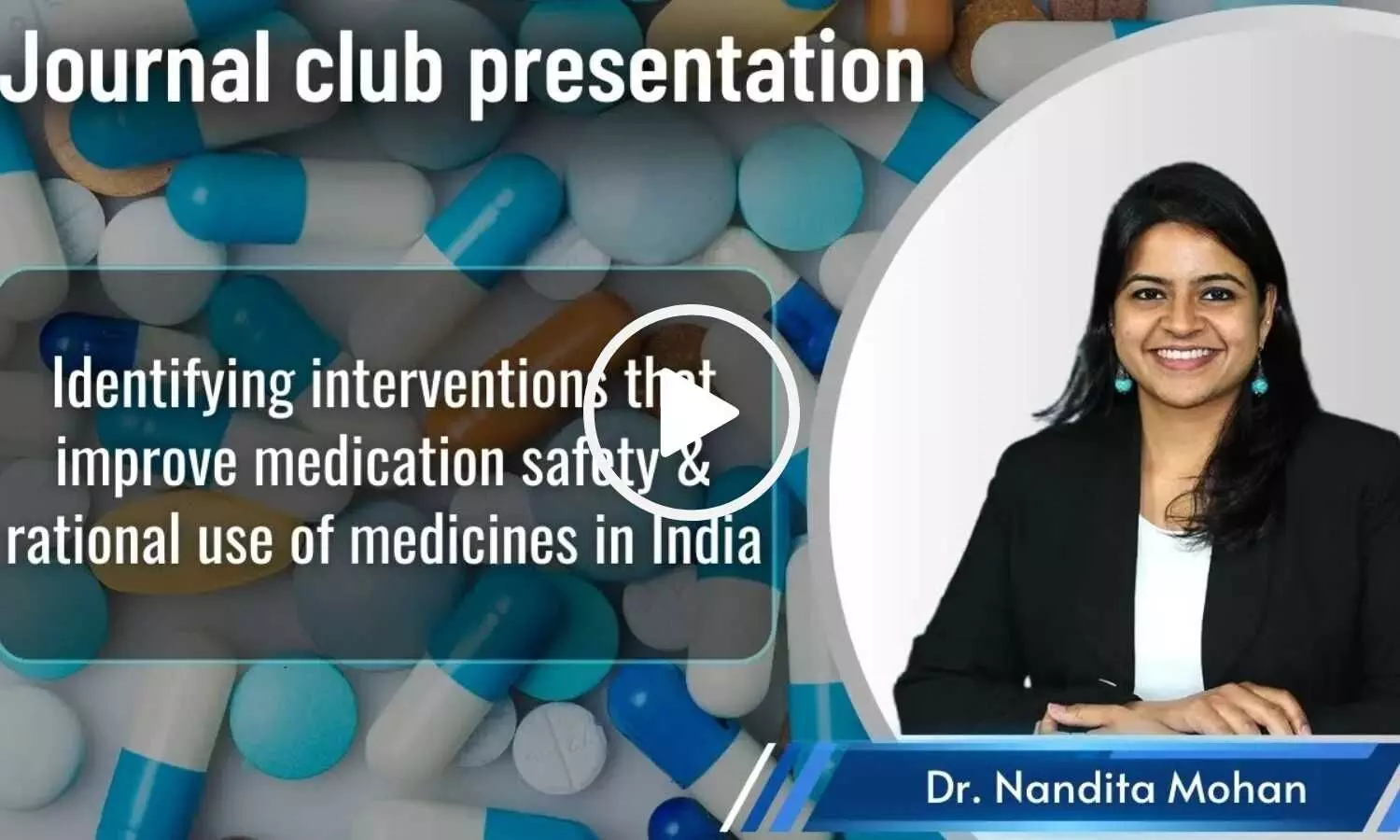
Powered by WPeMatico

Himachal Pradesh: Residents of Lahaul and Spiti have appealed to the state government to appoint a paediatrician and a gynaecologist at the district hospital in Keylong, highlighting the need for improved healthcare facilities at the hospital.
The hospital currently has an orthopaedic specialist and an anaesthesia expert, but the lack of paediatric and gynaecology specialists has made it increasingly difficult for the local population to access essential treatments.
Rigzin Samphel Heyreppa, a resident of Lahaul has mentioned that following the opening of the Atal Tunnel, their area has become a thriving destination for the tourist. He further emphasized the importance of healthcare services in the region, given the growing number of tourists. However, the region has not adequately addressed this increasing demand for healthcare. He further mentions that better healthcare facilities are needed to support tourism and ensure the well-being of residents.
A member of the District Council for Lahaul and Spiti named Kunga Bodh emphasized the need for paediatricians and gynaecologists to deliver essential healthcare services directly to the community. He mentions that as winter approaches and heavy snowfall becomes imminent, residents face increased challenges in accessing medical care outside the valley. He also adds that the government must send doctors committed to serving in this tribal district, especially during the harsh winter months.
Also Read: Shortage of Doctors: 78 specialist doctor posts lying vacant in Rudrapur Govt Hospitals
According to The Tribune, Local resident Mohan Lal Relingpa criticizes political parties for their failure to fulfil promises made to them regarding improvement in healthcare facilities made during election campaigns. “Once they are in power, they ignore the problems of the citizens,” he adds.
Local residents of Lahaul and Spiti are especially concerned about the health of children and expectant mothers, as they require consistent access to medical care. They urge the state government to prioritize the deployment of a paediatrician and a gynaecologist at the Keylong hospital.
Anuradha Rana the MLA of Lahaul and Spiti has also expressed concerns and raised the issue with the government, advocating for better healthcare facilities in the district. In response to the pressing demands of healthcare services, the health authorities of Lahaul and Spiti have also informed the higher authorities of the Health Department in Shimla regarding vacant posts of specialists at the Keylong hospital.
Powered by WPeMatico
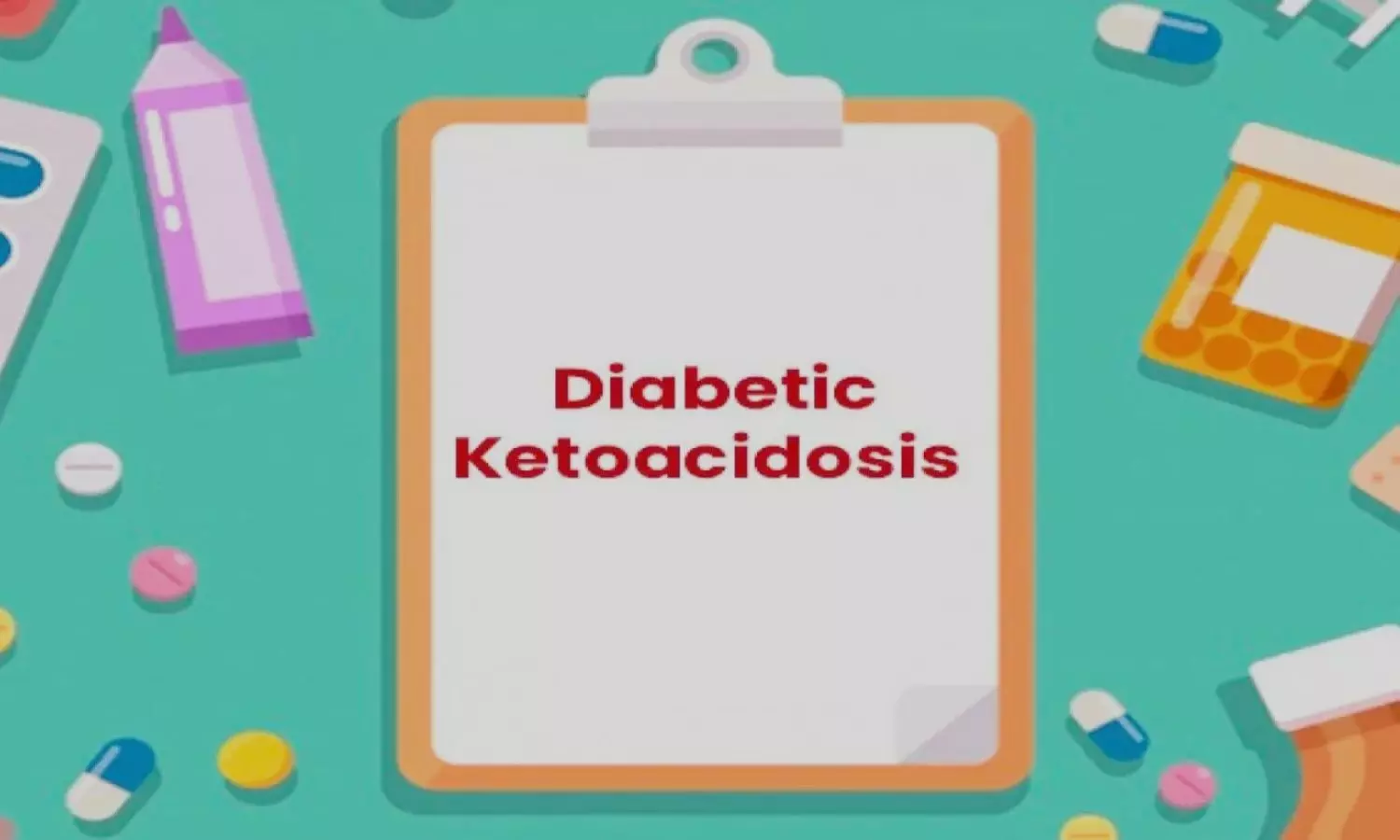
A recent case report highlights the importance of
understanding the possibility of the development of Euglycemic diabetic
ketoacidosis (EDKA) with the use of Empagliflozin, a new SGLT2 inhibitor as
published in the journal Annals of Medicine and Surgery.
Diabetes is a global pandemic. sodium-glucose cotransporter
2 (SGLT2) inhibitors are the common medicinal management for diabetes. Empagliflozin
which is a SGLT2i is frequently prescribed for diabetes due to its cardiorenal
advantages. Diabetic ketoacidosis (DKA) is one of the most serious, significant,
and acute diabetic complications characterized by hyperglycemia and ketoacidosis.
Euglycemic DKA (EDKA) keeps the patient’s serum glucose
concentration within the normal range posing difficulty for the physician and
the patient to identify it immediately. Previous literature shows that EDKA is
one of the complications of using Empagliflozin. Waleed M. Altowayan from Qassim
University, Saudi Arabia presents a case report of EDKA in a patient due to the
use of Empagliflozin.
A 75-year-old woman with a 15-year history of type 2
diabetes mellitus presented to the emergency department with decreased
consciousness and decreased oral intake for two days. She had been diagnosed
with a cerebrovascular accident 12 days back and was discharged then with drugs
like empagliflozin, aspirin, and atorvastatin.
There were no preceding symptoms, moderately dehydrated, with
dry oral mucosa and poor skin turgor. CT scan and blood investigations were
unremarkable except for metabolic acidosis, despite a minimally elevated serum
glucose concentration. The patient was admitted to the intensive care unit with
a diagnosis of EDKA secondary to empagliflozin and treated with intravenous
rehydration therapy and intravenous insulin infusion. The patient was later discharged
after gradual resolution of the ketoacidosis, with a normalized anion gap and
elimination of the serum ketones,and was prescribed metformin extended release
of 1 g daily and insulin 70/30 (20 U) twice daily.
This case emphasizes the importance of being aware of the development
of EDKA in diabetics with the use of SGLT2i. SGLT2i promotes excretion and blocks
glucose reabsorption from the proximal convoluted tubule causing carbohydrate
starvation and volume depletion leading to a state of severe dehydration and
ketosis due to an increased glucagon/insulin ratio. Apart from this mechanism
they also enhance the release of glucagon from the pancreas, which worsens the
existing glucagon/insulin imbalance.
It is necessary for both healthcare professionals and patients
to be aware of the symptoms of EDKA like nausea, vomiting, fatigue, and
dehydration. In such situations, it is advisable to get the ketone levels
assessed and discontinue the SGLT2i if suspicion of the development of ketoacidosis
is suspected.
The author further emphasizes that euglycemia is a common
feature and can cause delays in the diagnosis. Hence, EDKA should always be
considered in individuals who are on SGLT2i and developing unexplained metabolic
acidosis.
Further reading: Altowayan WM. Empagliflozin induced euglycemic diabetic ketoacidosis. A case reports. Ann Med Surg (Lond). 2022;84:104879. Published 2022 Nov 12. doi:10.1016/j.amsu.2022.104879
Powered by WPeMatico
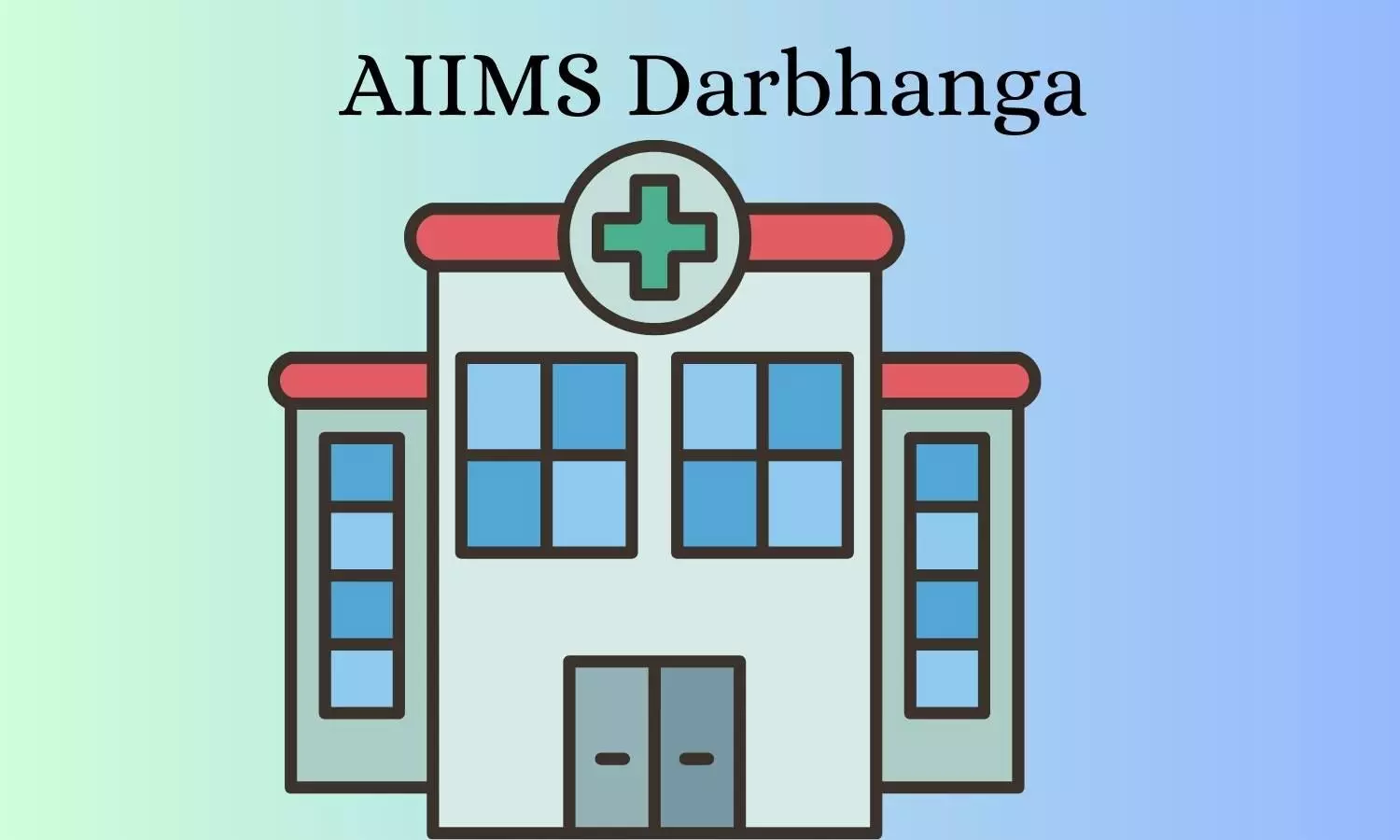
Patna: Prime Minister Narendra Modi is set to lay the foundation stone of the All India Institute of Medical Sciences (AIIMS) in Darbhanga on November 13. Speaking at a gathering during a Samman Samaroh in Patna, Choudhary mentioned that Bihar Chief Minister Nitish Kumar is also expected to attend the event.
Highlighting the challenges faced by North Bihar, particularly flooding, the Deputy CM emphasised that PM Modi is committed to addressing these regional issues.
According to an IANS report, Choudhary said, “The weakness of North Bihar is flood water and hence Prime Minister Modi is working to address this issue. He may come to Darbhanga to lay down the foundation stone for Darbhanga AIIMS on November 13. Preparations for the Prime Minister’s visit are currently underway to ensure a smooth event.”
Also Read:AIIMS Darbhanga to be built by NBCC arm, secures Rs 1261 crore contract
Bihar government has taken a significant step towards establishing a new All India Institute of Medical Sciences (AIIMS) in Darbhanga by officially transferring 150.13 acres of land at the Ekmi-Shobhan bypass to the Union Ministry of Health and Family Welfare.
This land transfer, completed in the second week of August this year, marks a major milestone in the project, which aims to bring advanced healthcare facilities to North Bihar, a region with high demand for improved medical infrastructure.
The Union Ministry approved the AIIMS Darbhanga project on July 25, following a site assessment by a technical team in March.
The team’s report confirmed the suitability of the Ekmi-Shobhan bypass location for the AIIMS campus.
In addition to the land transfer, the Union Health Ministry has outlined several infrastructure requirements for the project, including a permanent electricity connection of 20 MVA from two alternate sources, four-lane road connectivity to ensure ease of access and potable water supply of 1.5 million litres per day (MLD) to meet the facility’s needs, news agency IANS reported.
Bihar’s only AIIMS is located in Patna, but there has been a strong push for additional AIIMS in North Bihar to meet the healthcare demands of the region.
The establishment of AIIMS Darbhanga is expected to enhance access to high-quality medical care, reduce dependency on distant facilities, and address the healthcare needs of North Bihar’s population.
Also Read:Darbhanga AIIMS: Centre approves construction, Bihar Govt to expedite process of land transfer
Powered by WPeMatico
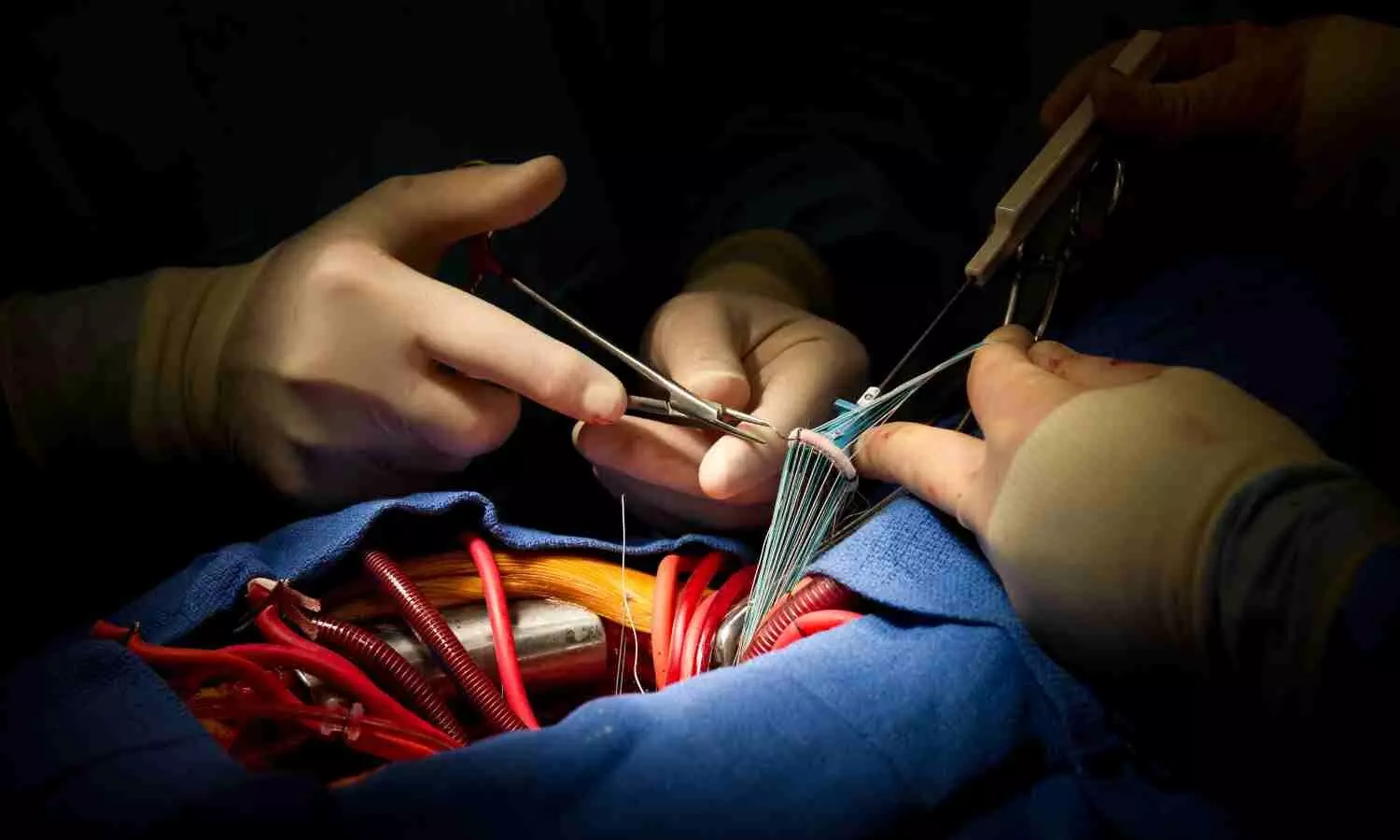
A new study published in the Journal of American Medical Association showed that the upper-extremity route for secondary access was linked to reduced clinically significant access site-related bleeding in patients receiving transfemoral transcatheter aortic valve implantation (TAVI) when compared to the traditional lower-extremity technique.
During transfemoral transcatheter aortic valve implantation, an upper-extremity secondary access technique may lessen hemorrhage associated with clinically significant secondary access sites. In order to examine the safety and effectiveness of an upper-extremity approach vs a lower-extremity approach in patients having TAVI, this study by Bohdan Nosyk and team was carried out.
This randomized clinical trial ran from November 28, 2022 to November 15, 2023, with a 30-day follow-up at four TAVI locations in the Netherlands. Eligibility was initially assessed, and only patients with severe aortic stenosis and no contraindications for upper- or lower-extremity secondary access were notified of the trial and invited to participate. For secondary access during TAVI, the participants were randomly assigned to either the upper- or lower-extremity method (femoral artery diagnostic access and femoral vein for temporary pacing lead implantation). The primary endpoint was clinically significant bleeding in the randomized secondary access. Secondary endpoints were any clinically significant bleeding, time to mobility, secondary access failure, length of hospitalization, and procedural time.
A total of 238 individuals who were getting transfemoral TAVI were included out of 324 eligible patients. 5 out of 119 patients (4.2%) in the upper-extremity group and 16 out of 119 patients (13.4%) in the lower-extremity group experienced the primary end point. In the upper-extremity group, the incidence of any clinically significant bleeding was reduced. The length of hospital stay and the time to mobilization were the same. The upper-extremity cohort had greater rates of procedural delay and secondary access failure.
While the upper-arm vein as temporary pacemaker access led to a shorter time to mobility in patients who required lengthy temporary pacing, the secondary arterial access was the primary contributor to this decrease in access site hemorrhage. Higher access failure rates and longer procedure times were the price paid for the decrease in access site hemorrhage.
Source:
Versteeg, G. A. A., Rooijakkers, M. J. P., Hemelrijk, K. I., Vlaar, P. J., Overduin, D. C., van Wely, M. H., Aarts, H. M., van Ginkel, D.-J., van Nunen, L. X., van Geuns, R. J., van Garsse, L. A. F. M., Geuzebroek, G. S. C., Verkroost, M. W. A., Cetinyurek-Yavuz, A., Heijmen, R. H., ten Berg, J. M., Tonino, P. A. L., Delewi, R., & van Royen, N. (2024). Upper- vs Lower-Extremity Secondary Access During Transcatheter Aortic Valve Implantation. In JAMA Network Open (Vol. 7, Issue 10, p. e2438578). American Medical Association (AMA).
https://jamanetwork.com/journals/jamanetworkopen/fullarticle/2824915?
Powered by WPeMatico
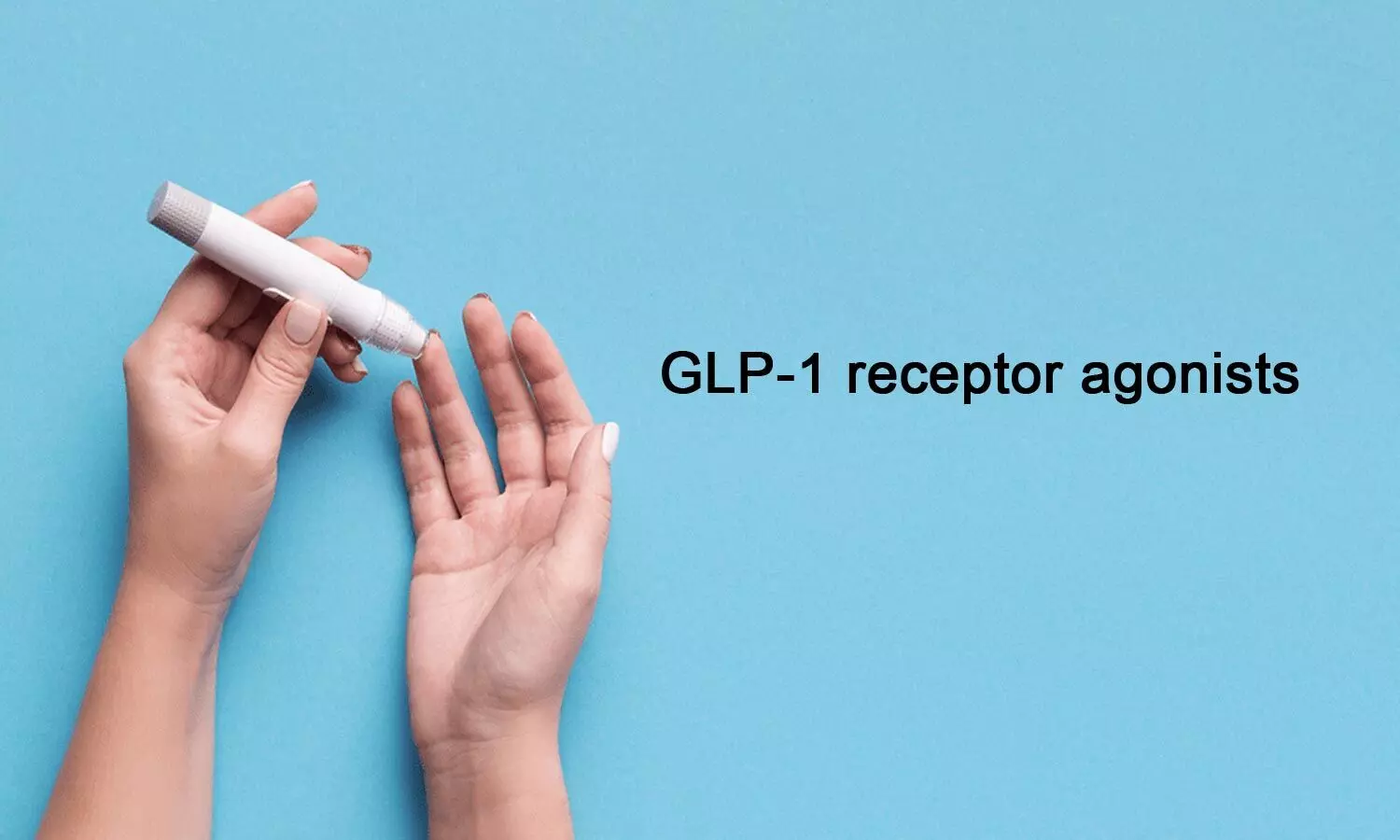
China: Recent observations have highlighted a rare and noteworthy side effect associated with the use of glucagon-like peptide-1 (GLP-1) receptor agonists (GLP1-RAs), commonly prescribed for the management of type 2 diabetes mellitus (T2DM). While these medications have become increasingly popular for their efficacy in controlling blood sugar levels, a specific case has drawn attention due to its unusual outcome: a significant elevation in carbohydrate antigen 19–9 (CA 19-9) without any underlying tumor presence.
The case highlights the importance of recognizing that GLP1-RAs, while beneficial for glycemic control in T2DM, can produce unexpected adverse reactions, including elevated tumor markers.
“GLP1-RAs can cause increased levels of tumor markers during the treatment of type 2 diabetes, highlighting the need for careful monitoring throughout therapy. It’s important to tailor antidiabetic management to each individual’s circumstances as necessary,” the researchers wrote in Diabetes & Metabolism.
GLP-1 receptor agonists are widely prescribed for managing T2DM. While various adverse reactions have been documented, the case by Hongmei Jiao, Department of Geriatrics, Peking University First Hospital, Beijing, China, and colleagues highlights a rare occurrence where a GLP1-RA resulted in significantly elevated levels of CA 19-9 without any indication of a tumor.
This case centers on a 69-year-old Han Chinese woman with a 30-year history of type 2 diabetes mellitus, referred to the clinic for significantly elevated CA 19-9 levels at 839.8 U/ml (normal upper limit: 37.0), despite the absence of symptoms. Seventeen months prior, she started treatment with dulaglutide (1.5 mg weekly) to enhance glycemic control, alongside metformin (500 mg thrice daily) and acarbose (100 mg thrice daily). This regimen improved her blood sugar levels, reduced her appetite, and stabilized her weight after a 3 kg loss.
Her clinical examination was unremarkable, with a body mass index of 21.1 kg/m² and an HbA1c level of 6.5%. Imaging revealed a cystic lesion in the pancreatic tail and a solid mass in the right adnexal region, diagnosed as a broad ligament leiomyoma. Further tests, including PET-CT, showed no significant lesions.
Due to concerns regarding the potential impact of GLP-1 receptor agonists on pancreatic health, dulaglutide was discontinued. One week later, CA 19-9 levels began to decline, reaching normal levels (33.29 U/ml) within two months. Following the cessation of dulaglutide, her appetite improved, but her glycemic control worsened, prompting the addition of insulin to her treatment plan.
The case highlights that elevated CA 19-9 levels can occur with dulaglutide use without malignancy, underscoring the need for careful monitoring of tumor markers during treatment. Notably, levels returned to normal after discontinuation, suggesting that such increases can be drug-related. This is the first report linking dulaglutide to abnormal CA 19-9 elevation in the absence of cancer, emphasizing the importance of follow-up and further investigation when faced with rising tumor markers.
“This case report highlights a rare phenomenon linked to individual variations in response to GLP-1 receptor agonist treatment. In clinical practice, it is crucial to quickly recognize such occurrences, intervene as needed, and discontinue the medication when appropriate to avoid adverse outcomes,” the researchers concluded.
Reference:
Liang, R., Fu, Z., Chen, L., Zhou, S., & Jiao, H. (2024). A very rare cause of markedly elevated CA 19–9: Glucagon-like peptide-1 receptor agonists. Diabetes & Metabolism, 50(6), 101578. https://doi.org/10.1016/j.diabet.2024.101578
Powered by WPeMatico

China: A recent randomized clinical trial has revealed promising results regarding the use of vitamin K2 in managing nocturnal leg cramps (NLCs), particularly in older adults.
The study, published in JAMA Internal Medicine, showed that vitamin K2 supplementation notably decreased the frequency, intensity, and duration of nocturnal leg cramps in older adults, demonstrating a strong safety profile.
Nocturnal leg cramps can significantly disrupt sleep and quality of life, impacting daily activities and overall well-being. With limited traditional treatment options available and no reliably safe and effective therapies currently established, researchers are increasingly exploring alternative solutions, including dietary supplements, to manage these cramps. Finding effective methods for alleviating nocturnal leg cramps is, therefore, essential.
Against the above background, Jing Tan, The Third People’s Hospital of Chengdu, Chengdu, China, and colleagues aimed to assess whether vitamin K2 is more effective than a placebo in managing nocturnal leg cramps.
For this purpose, the researchers conducted a multicenter, double-blind, placebo-controlled, randomized clinical trial in China from September 2022 to December 2023. The study involved community-dwelling individuals aged 65 and older with two or more documented nocturnal leg cramps during a two-week screening. Eligible participants were randomly assigned in a 1:1 ratio to receive either 180 μg of vitamin K2 (menaquinone 7) or a placebo for eight weeks.
The primary outcome measured was the mean number of NLCs per week, while secondary outcomes included the duration and severity of cramps.
The following were the key findings of the study:
This randomized clinical trial showed that vitamin K2 supplementation significantly decreased the frequency, intensity, and duration of nocturnal leg cramps in older adults, with a favorable safety profile.
“Given its safety, further clinical trials are recommended to confirm the effectiveness of vitamin K2 in managing cramps and to evaluate its impact on the quality of life and sleep in patients experiencing nocturnal leg cramps,” the researchers concluded.
Reference:
Tan J, Zhu R, Li Y, et al. Vitamin K2 in Managing Nocturnal Leg Cramps: A Randomized Clinical Trial. JAMA Intern Med. Published online October 28, 2024. doi:10.1001/jamainternmed.2024.5726
Powered by WPeMatico

USA: A recent study has shed light on the potential advantages of sodium-glucose cotransporter-2 (SGLT-2) inhibitors for patients experiencing recurrent nephrolithiasis, especially those with pre-existing nephrolithiasis or gout. The research, published in The BMJ, employs target trial emulation to provide insights into how these medications can simultaneously manage kidney stone recurrence and related comorbidities.
“In a study involving over 20,000 patients with type 2 diabetes and nephrolithiasis, those who began treatment with SGLT-2 inhibitors had significantly fewer recurrent kidney stone events than those using GLP-1 receptor agonists or DPP-4 inhibitors. This protective benefit was especially evident in patients with active nephrolithiasis who also had gout. Additionally, SGLT-2 inhibitors were linked to a reduction in gout flare-ups,” the researchers reported.
Nephrolithiasis, commonly known as kidney stones, is a painful condition that can lead to significant morbidity. Patients with a history of kidney stones often find themselves in a cycle of recurrence, which can be exacerbated by conditions such as gout. Traditionally, treatment options for managing nephrolithiasis have been limited, focusing mainly on lifestyle modifications and pain management.
Against the above background, Natalie McCormick, Department of Medicine, Harvard Medical School, Boston, MA, USA, and colleagues conducted target trial emulations to compare the recurrence of nephrolithiasis in patients with a history of nephrolithiasis—both overall and specifically for those with concurrent gout—who start treatment with SGLT-2 inhibitors versus an active comparator.
The researchers conducted target trial emulation studies using a Canadian population database from 2014 to 2022, analyzing data from 20,146 patients with nephrolithiasis and type 2 diabetes, including those with gout. They compared the initiation of SGLT-2 inhibitors and GLP-1 receptor agonists against DPP-4 inhibitors. The primary outcome was recurrent nephrolithiasis events identified through emergency department visits and hospital admissions. Secondary outcomes included nephrolithiasis-related admissions and gout flare-ups. Data analysis utilized Poisson and Cox proportional hazards regression models to evaluate the effectiveness of SGLT-2 inhibitors in preventing kidney stones in high-risk patients.
The study led to the following findings:
“The findings from these target trial emulations indicate that SGLT-2 inhibitors could be a valuable addition to existing treatments for patients with nephrolithiasis, helping to manage both the recurrence of kidney stones and related comorbidities, such as gout,” the researchers concluded.
Reference:
McCormick N, Yokose C, Lu N, Wexler D J, Aviña-Zubieta J A, De Vera M A et al. Comparative effectiveness of sodium-glucose cotransporter-2 inhibitors for recurrent nephrolithiasis among patients with pre-existing nephrolithiasis or gout: target trial emulation studies BMJ 2024; 387:e080035 doi:10.1136/bmj-2024-080035
Powered by WPeMatico

The number of young women of childbearing age diagnosed with
Type II diabetes mellitus has increased globally, and many more women will
present with hyperglycemia first identified in pregnancy. There is a global
rise in the prevalence of gestational diabetes mellitus (GDM). Over 80% of
women with hyperglycemia in pregnancy have GDM. Hyperglycemia first identified
in pregnancy can be classified as either GDM or diabetes mellitus in pregnancy.
Gestational diabetes mellitus is defined as different levels of glucose
intolerance first identified in pregnancy. The diagnosis of GDM is made when
hyperglycemia first detected in pregnancy does not meet the criteria for the
diagnosis of diabetes mellitus in the non-pregnant state: Gestational diabetes
mellitus is fasting plasma glucose (FPG) value between 5.1 to 6.9 mmol/L, or
one-hour 75g oral glucose tolerance test (OGTT) of10.0mmol/l or more, or
two-hour 75g OGTT value between 8.5 to 11.1mmol/L. The prevalence of GDM varies
from country to country and
The babies of women with GDM may be premature, growth-restricted,
or large-for-date. They may suddenly die in utero or have birth injuries from
shoulder dystocia and instrumental delivery. These babies may be admitted into
the special care baby unit for hyperglycemia, hypoglycemia, hyperbilirubinemia,
electrolyte imbalance, necrotizing enterocolitis, intra-ventricular hemorrhage,
or respiratory distress syndrome.
The morbidities associated with GDM can be significantly
reduced if the women are diagnosed with GDM early and appropriate treatment is
instituted. The Oral glucose tolerance test is the gold standard for GDM
screening in pregnant women. The OGTT requires a stable carbohydrate diet for
about three days and an overnight fast of at least eight hours. The OGTT is
also affected by medications, acute illness, exercise, and stress. Most women
do not meet these pre-analytical conditions before they are screened for GDM
using the OGTT. The OGTT procedure requires drinking a glucose solution that
may cause nausea and vomiting and also requires multiple sample collections. Therefore,
the OGTT procedure is cumbersome.
Glycated albumin is formed when albumin undergoes a
nonenzymatic glycation reaction with blood sugar. Unlike OGTT which can be
affected by fasting and type of food, glycated albumin is not affected by
fasting or type of carbohydrate intake. The half-life of glycated albumin is
about 20 days, therefore can be used to assess glycemic control for up to three
weeks with a single sample collection irrespective of fasting or type of food
eaten by the woman. Glycated albumin concentration in plasma is not affected by
iron deficiency anemia, sickle cell disease, and sickle cell disease traits, however,
it can be affected by disease conditions that affect albumin metabolism, age,
and body mass index. Glycated albumin is also affected by ethnicity and race.
Black Americans have higher glycated albumin levels than Caucasians.
The study involved 200 pregnant women attending the
antenatal clinic at the University of Port Harcourt Teaching Hospital. The
diagnosis of gestational diabetes mellitus was made using the World Health
Organization 2013 diagnostic criteria. The test characteristics of glycated
albumin were determined using the area under the curve of the receiver operator
characteristic curve, sensitivity, specificity, positive predictive value, and
negative predictive value.
The prevalence of gestational diabetes mellitus was 9.0%.
The area under the receiver operator characteristic curve for glycated albumin
was 0.8 (95% CI 0.7-0.9; p=0.0001). The sensitivity and specificity of glycated
albumin were 83.3% and 86.8% respectively. The positive predictive value was
38.5% and the negative predictive value was 98.1%.
The prevalence of GDM in this study is 9.0% which is higher
than the values reported in a systematic review and meta-analysis of other
studies in Africa. Glycated albumin measured between 24 to 28 weeks of
gestation at a diagnostic cut-off value of 19% has a sensitivity of 83.3%, a
specificity of 86.8%, a positive predictive value of 38.5%, and a negative predictive
value of 98.1%. Therefore, can be used as a preliminary test in determining who
will be screened for GDM using OGTT.
Source: Woruka et al. / Indian Journal of Obstetrics and
Gynecology Research 2024;11(2):281–286
https://doi.org/10.18231/j.ijogr.2024.054
Powered by WPeMatico
